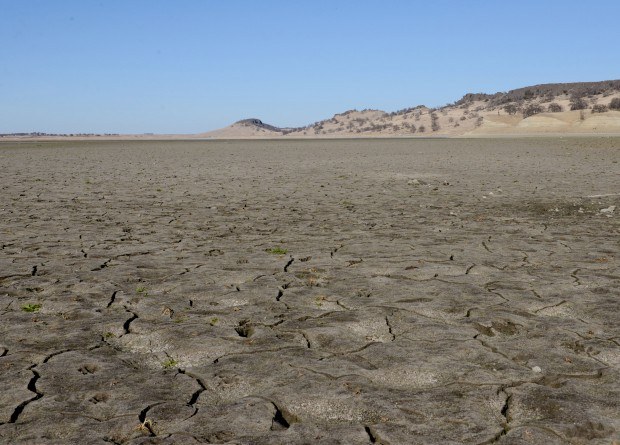El Nino couldn’t bail California out of an unprecedented drought. Don’t count on La Nina to do any better.
California, in its fifth year of drought, gets most of its water from November to March. The El Nino that’s been in place for about a year helped fill some northern reservoirs but failed to bring much relief to the southern part of the state.
And it’s unclear how much more help La Nina can deliver, if it takes over. In some years, La Nina brought Pacific storms with rain and snow. At other times, the systems missed the state completely, said Mike Anderson, California’s state climatologist in Sacramento.
“The key word for La Nina is variability, which means being ready for anything,” he said.
El Nino, marked by a warming of the Pacific’s surface, held great promise for helping the state out of its drought. Now the ocean’s surface is starting to cool, which may signal the start of a La Nina, a pattern that typically contributes to more hurricanes in the Atlantic, drought in Brazil and heavy rain in Indonesia and India.
“The wet-season component of water year 2016 did not quite play out as expected,” Anderson said. “There were improvements in some places and not in others, resulting in a more regional look to the ongoing drought.”
Abnormally Dry
About 95 percent of California is still abnormally dry or in some stage of drought, according to the U.S. Drought Monitor. Even so, the area deemed “extreme” and “exceptional,” the two worst categories, has dropped to nearly 43 percent from 71 percent last fall.
The worst-hit areas are southern California and the San Joaquin valley. Meanwhile, two of the state’s largest reservoirs in the north are actually holding more water than usual at this time of year, according to the department of water resources.
The mixed results led the state to release control of conservation efforts to local water boards. The move makes sense as “there are adequate municipal supplies in a lot of areas,” said Robert Hartman, hydrologist in charge of the California Nevada River Forecast Center in Sacramento. “It is not an equal playing field.”
Conservation Measures
Not enough is known about how El Ninos affect California to come up with a canon on how the phenomenon is supposed to work. People should avoid having concrete expectations on what an El Nino or La Nina is going to do, he said.
With spring winding down, no one should expect further drought relief before the fall. Hartman said he tore out his front lawn and replaced it with a dry steam bed and plants that don’t need much water.
As for the long term?
“The drought isn’t over,’ Hartman said. “The drought may never be over completely. There are just too many people here.”





















 Insurance Costs, Climate Concerns Factor Heavily in U.S. Home Buying Decisions
Insurance Costs, Climate Concerns Factor Heavily in U.S. Home Buying Decisions  Why the Middle Market Matters and How Insurers Can Capture It
Why the Middle Market Matters and How Insurers Can Capture It  Northern California Flooding This Weekend Caused by Heavy Rain, High Tides
Northern California Flooding This Weekend Caused by Heavy Rain, High Tides  Good Times for U.S. P/C Insurers May Not Last; Auto Challenges Ahead
Good Times for U.S. P/C Insurers May Not Last; Auto Challenges Ahead 












